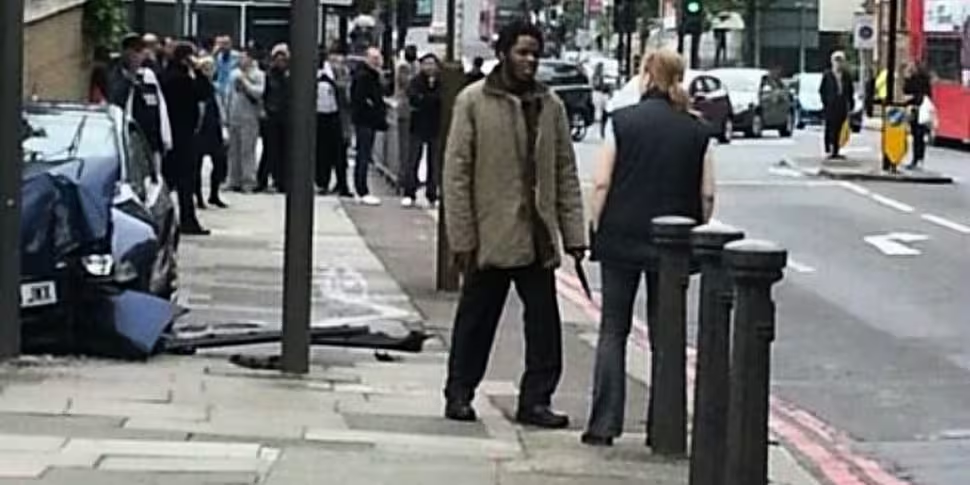In the aftermath of yesterday’s violent attack in Woolwich, there has been controversy brewing about the way some publications and news agencies have been covering the story. Several commentators have picked up on ITV’s pronouncement that the murder marks “the day Baghdad style violence came to South London”. The Daily Mail, meanwhile, write that the perpetrators have brought “their war on the West to a whole new level of horror”.
While it’s often American news agencies that receive criticism for their journalistic biases, examples such as these illustrate a level of ideological rhetoric and hyperbole that can be present through the language used in UK news reporting.
How many times are detailed reports from the actual Baghdad streets presented in the mainstream media? The response to Woolwich indicates the manner in which entire communities can be demonised through the actions of a handful of individuals.
Though reports and evidence suggest that the Woolwich attacks were carried out by individuals operating on an extremist Islamic ideology (Muslim leaders have vocally condemned the attack), the language used by some media outlets in the reporting underlines a pro-Western, anti-Islamic agenda running through many prominent news agencies.
Such reports can have side-effects: yesterday’s attack provoked fears of ‘reprisals’ against British Islamic communities. Is the media influencing society, or is the media simply reflecting certain sections of society?
Changing landscape
Meanwhile, ITV – the first news agency to broadcast the video of an alleged suspect in the aftermath of the attack – has been criticised by Channel 4 journalist Jon Snow for the network’s approach to the ‘exclusive’ news content:
Itv stoops to dark ages cheque bk hackery to prevent Woolwich eye witnesses who've already spoken from speaking any more. Not good practice.
— Jon Snow (@jonsnowC4) May 23, 2013
Incidents such as this illustrate the continuing ethical challenges facing news agencies in a world of social media and 24-hour news. The Woolwich attacks had eyewitnesses tweeting responses as the situation was developing in front of them. Rapper Boya Dee, for example, posted a number of graphic tweets from the scene that soon went viral:
Ohhhhh myyyy God!!!! I just see a man with hishead chopped off right in front of my eyes!
— Boya Dee (@BOYADEE) May 22, 2013
Journalistic approaches in situations such as Woolwich raise all sort of ethical questions about the way tragedies and violence are reported on. They also chronicle the ongoing attempts of traditional media to remain relevant and prominent in a time when photos, videos and social media are ubiquitous and can be shared with the world almost instantly.
How do news agencies keep their coverage unique and worth watching? ‘Exclusive’ content will certainly attract the attention of readers or viewers, but the biq question is whether matters of public interest such as the testimony of witnesses should be ‘exclusive’ in the first place.
Boston bombings
Similar questions were raised during the reporting of the Boston bombings and the subsequent manhunt for suspects Dzhokhar and Tamerlan Tsarnaev. With news developing by the minute, many media outlets were forced to negotiate through contradictory, uncertain or outright false information - all while various agencies were desperate to get the latest 'breaking news' for themselves.
CNN, for example, falsely reported that a suspect had been arrested, while the New York Post printed a photo of two alleged suspects on its front page – ‘suspects’ who were in fact completely innocent.

The Boston bombings last month also raised concerns about where the line should be drawn in coverage of violent attacks in an increasingly multimedia, uncensored world – questions that are likely going to be raised again today after the emergence of the disturbing video featuring what appears to be a political declaration from the bloodied, machete-wielding Woolwich suspect as the victim’s body lies nearby.
Even that video’s existence – seemingly shot on a mobile phone by an onlooker who arguably was putting himself in danger – illustrates a shift in the way news is captured and disseminated in the digital age.
In Boston terms, the New York Daily News doctored their front page photo of the aftermath of the bombings to remove some details of blood and injuries. American journalist Charles Apple wrote about the incident, suggesting that it "looks to me like somebody did a little doctoring of that photo to remove a bit of gore.If you can't stomach the gore, don't run the photo. Period.”
New York Daily News defended the decision, saying the alteration was made out of sensitivity to the victims.
Shocking images and video have long been a part of a healthy media landscape – coverage of atrocities, after all, is credited with turning public opinion on the Vietnam War and countless other examples.
The challenges of journalistic curation, however, are ever more pronounced when not only is there a steadier stream of content, but also a steadier stream of reaction to the content. When are the various lines crossed when the lines themselves are ever-more uncertain?
Many of these are questions without answers, with ethics and ideologies varying massively between both the news agencies and also their audience. The only certainty is that media coverage – or sometimes lack thereof – of tragedies will continue to provoke debate and controversy.









